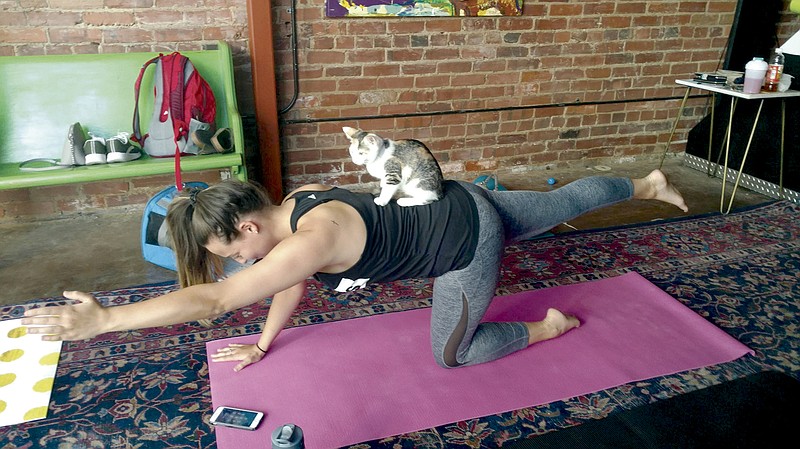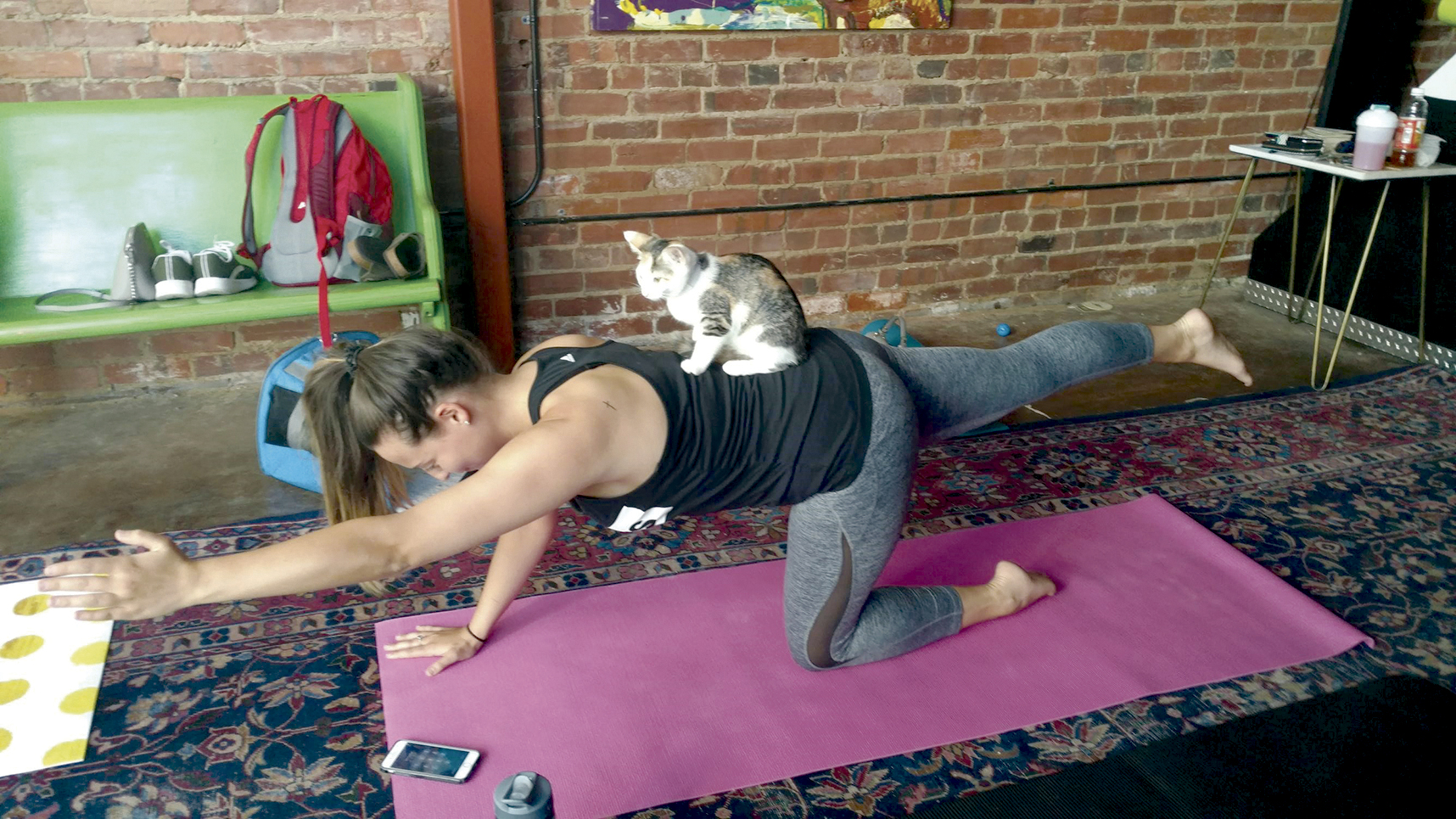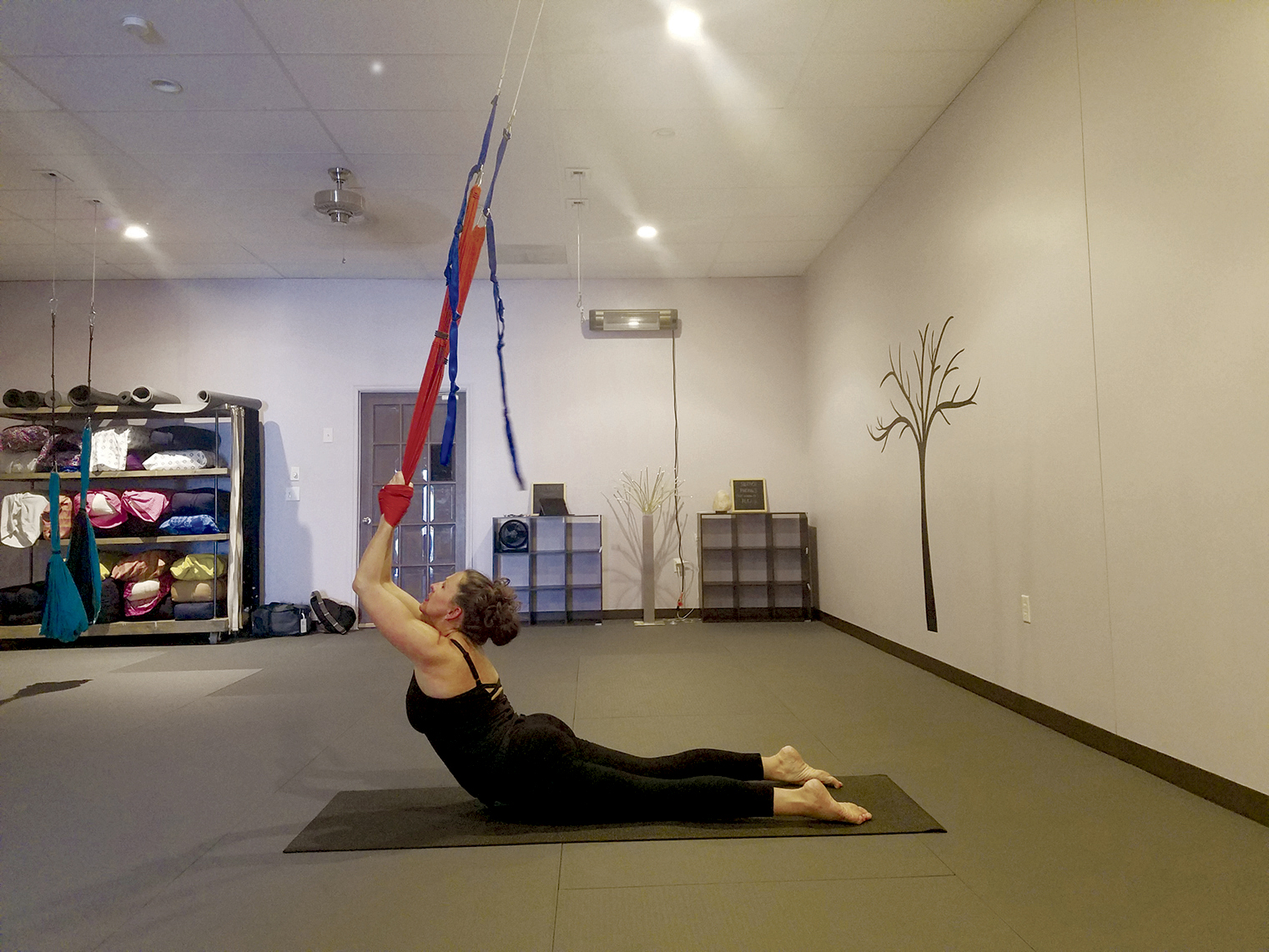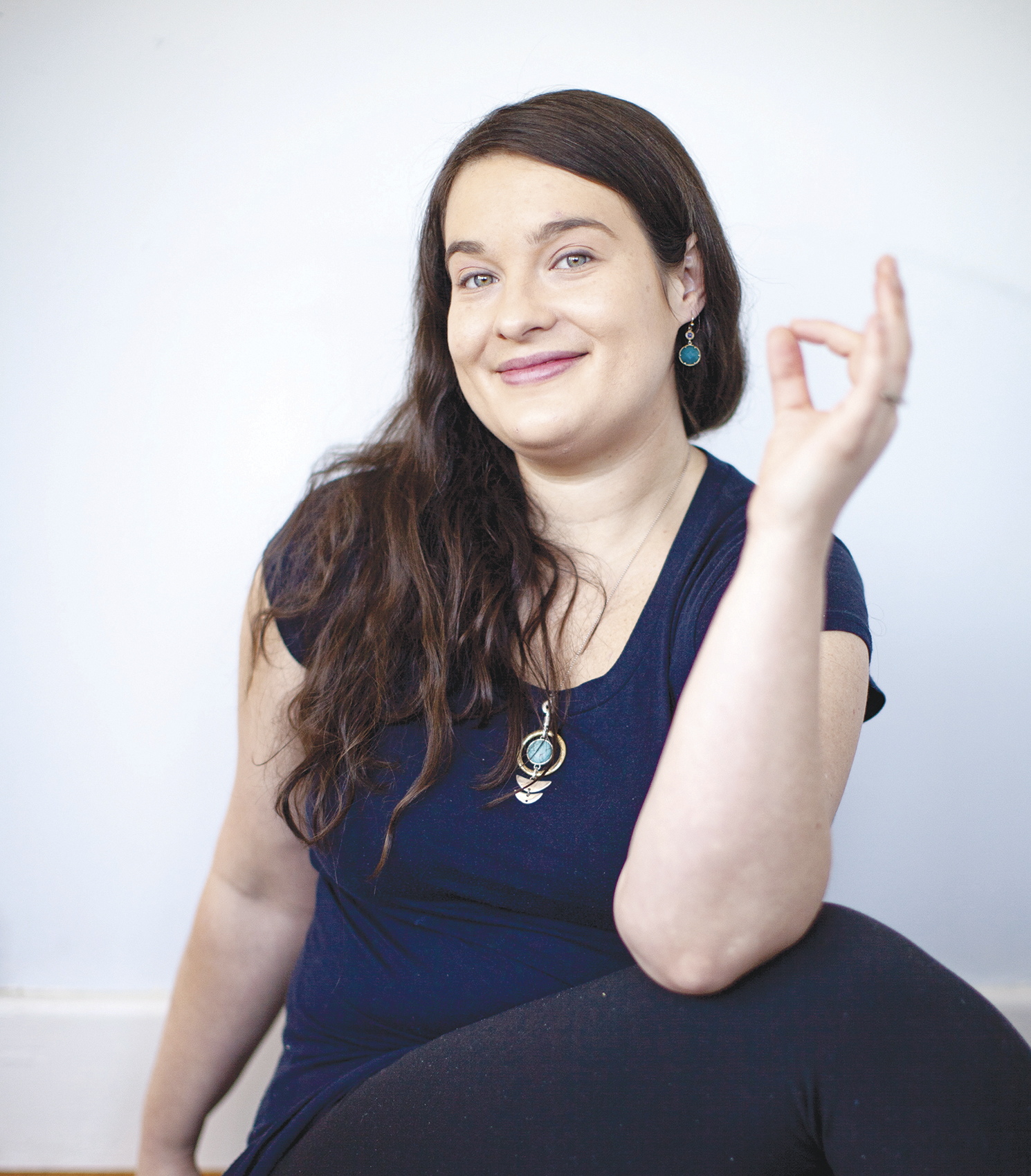In this age of athleisure, many are familiar with the benefits of yoga outside of the opportunity to wear yoga pants everywhere. The ancient practice loosens limbs, shores up balance, strengthens the body's core, teaches us how to breathe, and, maybe most of all, reminds us to leave our ego at the door for once. These days, there are just as many types of yoga as benefits: yin (restorative), bikram (hot), ashtanga (power) and vinyasa (flow).
But this is 2019, and there are some unusual - dare we say strange? - new classes in town. Here is a breakdown of four of them, along with good reasons to try them all.
KITTEN YOGA
"I have lived with many Zen masters, all of them cats." So said spiritual teacher and meditation guide Eckhart Tolle. According to Rachel Kile, a yoga aficionado (and cat-lover) who has tried kitten yoga at three different local studios, it's a joyful way to exercise and get some kitty-loving in at the same time.
When you arrive at a kitten yoga class, you'll find eight to 15 kittens waiting patiently in their cages until the moment of release. Once they are sprung, Kile says, where - or upon whom - they will light is anyone's guess.
"Kittens love downward dog (so they can play in your hair), and warrior poses, where they can run between your legs," she notes.
Is it possible to concentrate on your yoga poses while a kindle of kittens is cavorting about? It is, though Kile advises those attending a kitten yoga class for the first time to " set your yoga goals a little lower, and prepare to giggle a lot."
According to Taylor Hixson, development director at the Humane Educational Society, which brings kitties to many of the kitten yoga classes around town, what's good for the yogis is also good for the kitties.
"Kitten yoga gives our kittens a chance to have some play time with plenty of space to run around," she says. "It also socializes them with each other and with people, which helps make them more adoptable."
Not to mention, kitten yoga is a great opportunity for kittens and potential adopters to meet one another. "We have a kitten adopted or go into foster care in almost every class we host," says Hixson.
Where to try it:
' Thrive Yoga and Wellness, 7633 E. Brainerd Road, Suite 117
' Peace Strength Yoga, 3800 St. Elmo Ave., Suite 122
' Barley Taproom, 235 E. M.L. King Blvd.
AERIAL YOGA
When I think of aerial yoga, my mind inevitably conjures muscle-bound people in outlandish outfits flying through the air in feats of strength and grace, something like Cirque du Soleil, only without the narrative structure.
Rebecca Balch, aerial yoga instructor at Thrive Yoga and Wellness in East Brainerd, quickly set me straight.
"Like traditional yoga, aerial yoga (also called anti-gravity yoga) can be gentle and relaxing, or it can be a challenging workout." It's not, however, a circus show, she says.
The goal is to help develop strength, create alignment and enhance balance. But unlike traditional yoga, which uses straps and blocks as props, aerial yoga incorporates the use of slings hanging from the ceiling. Positions that are low to the floor allow students to "relax into the softness of the slings," says Balch, while gravity and relaxation help to open up the hips and back in a "deep but gentle way."
Says Balch, "You can find the perfect body position for a certain pose, and then, because you are being supported, work to develop your balance."
While aerial yoga can be more difficult and more uncomfortable at first than traditional yoga, she adds, "because we are not used to hanging in suspension and putting the pressure of our weight on our shoulders or hips," barring true physical limitations or injuries, aerial yoga is generally safe for most people.
The best part? For savasana, or the final relaxation pose at the end of class, instead of lying flat on the floor, students rest in "a floating cocoon." Yum.
"Trying new things can be good for the body and mind," Balch says. Plus, there is something about floating, flying and being upside down that is exhilarating.
Where to try it:
' Thrive Yoga and Wellness, 7633 E. Brainerd Road, Suite 117
GOAT YOGA
When I first saw goat yoga advertised on Facebook, I knew I had to try it. Why? Because it's yoga - with goats. This kind of thinking ultimately landed me in a small corral beside Eastgate Mall on an exquisitely hot summer morning with about 20 other people and eight adorable tiny goats.
Goat Yoga Chattanooga was started by Cleveland, Tennessee, goat farm owner Becca Caney, a recent Texas transplant, who said she chose Chattanooga because it's both outdoor friendly and animal friendly. While I hadn't heard of goat yoga before discovering it on Facebook, it had been on Caney's radar for awhile.
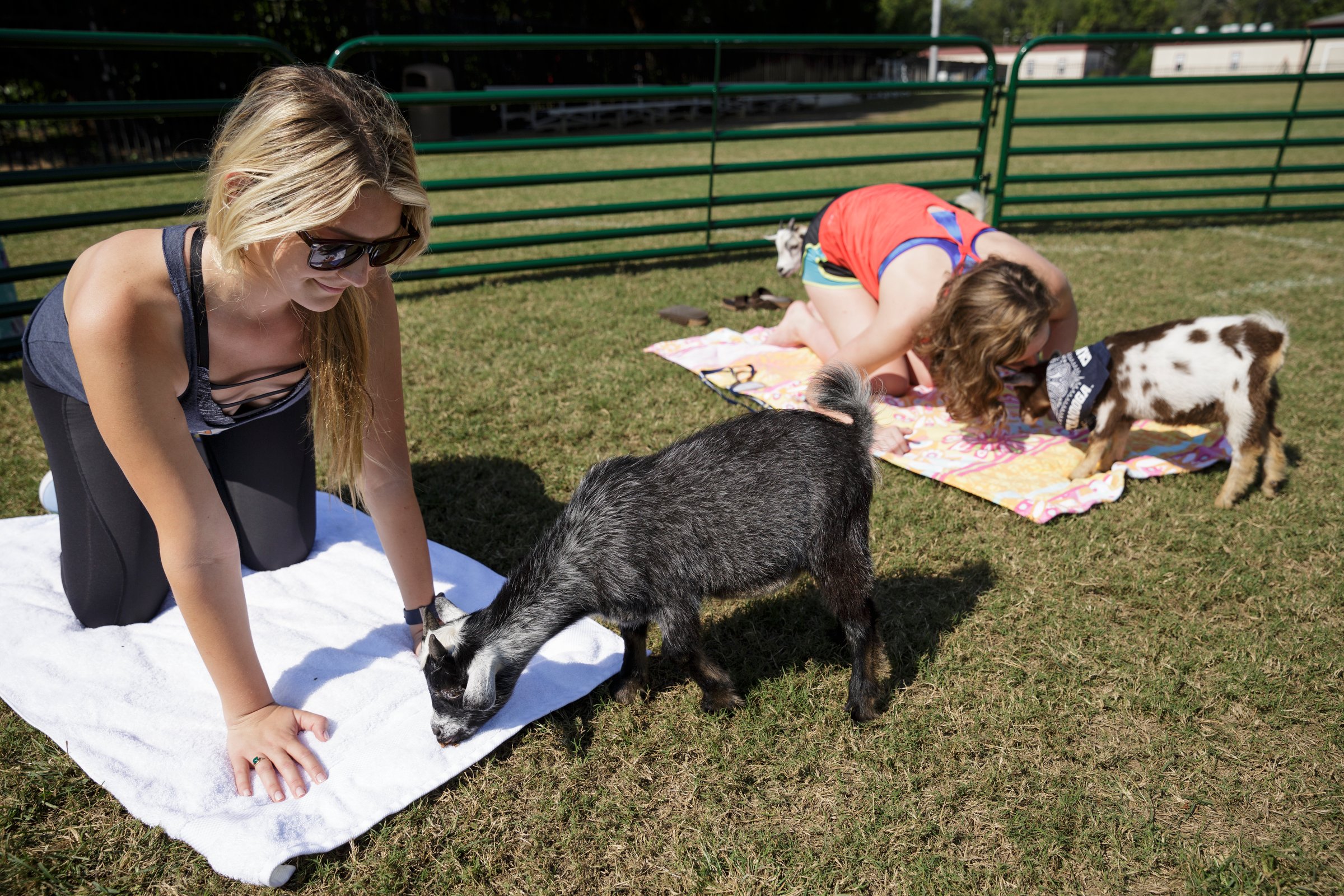 Alexis Florence, left, and Anna Harbert watch as goats move past during a goat yoga session on the campus of the University of Tennessee at Chattanooga on Thursday, Sept. 20, 2018. The goat yoga sessions were brought to campus as part of an effort to improve student mental health, well being and self-care.
Alexis Florence, left, and Anna Harbert watch as goats move past during a goat yoga session on the campus of the University of Tennessee at Chattanooga on Thursday, Sept. 20, 2018. The goat yoga sessions were brought to campus as part of an effort to improve student mental health, well being and self-care."Goats are actually very cuddly and inquisitive little animals," she says. "They all have unique personalities, and they interact with humans similarly to puppies." This makes them perfect for social activities. Caney adds, "Many animals tap into something in our souls, but the charm of farm animals makes us feel even closer to nature."
She was right. I did feel close to nature at my class. In part, it was the fresh smell of newly mown grass mingling with the sweet smell of hay scattered in little piles throughout the yoga corral. But it was also the fact that a tiny hooved animal melted into my embrace when I pulled him onto my lap.
While Caney does bring some baby goats to class, she primarily brings full grown (but still tiny) Pygmy and Nigerian Dwarf goats. Most of them are her personal backyard pets, and all must have passed personality and interaction tests before they can join a class, she says.
And, says Caney, "Tiny hooves on your back during 'child's pose' feels like a little mini massage."
Where to try it:
' Locations vary. Contact Becca Caney for info at 214-492-3561 or connect with Goat Yoga Chattanooga on Facebook.
TRAUMA-INFORMED YOGA
Leah Bockert is a yoga and meditation teacher and the practitioner of something called trauma-informed yoga (TIY), a practice that draws on a growing base of evidence supporting a relationship between trauma, the body and the mind. Developed at the Trauma Center in Brookline, Massachusetts, the goal of TIY is to " enhance somatic awareness (awareness of the body) for the purpose of encouraging self-acceptance and empowerment."
"TIY provides a safe space for personal inquiry, discovery and healing," Bockert says. "A trauma-informed approach is critical when working with certain populations [but] we can all benefit from self-care practices that help us to unwind our nervous systems and to self-regulate our emotions."
Like traditional yoga, TIY can be practiced one-on-one or in a group. Also like traditional yoga, in TIY, the emphasis is not on appearance or ego, but rather on enhancing the participants' understanding and experience of their own body apart from, and in conjunction with, their environment. To this end, no physical, hands-on adjustments take place in a TIY class. Instead, its purpose is to offer the opportunity for participants to be in charge of themselves and their own choices with regard to movement, something trauma survivors might have found was not open to them in the past.
Because the gentle, hands-off approach and invitation to (re)unite with one's body can spark strong emotional release, it is recommended that TIY be practiced in conjunction with psychotherapy. In fact, at the Trauma Center in Brookline, having an established relationship with an outside therapist is a requirement. While Bockert says she is capable of "holding space" for possible strong emotional reactions, she strongly recommends participants engage a licensed therapist to deal with whatever comes up in class.
"We all hold and carry a lot [of pain and stress] in our bodies, minds and hearts," says Bockert. "I think it's important to emphasize our resiliency and our ability to grow and transform."
Where to try it:
' Once Bockert completes her certification at the Trauma Center in Brookline, she plans to offer small group classes at the Center for Mindful Living. Contact her at Leahbockert@gmail.com.
